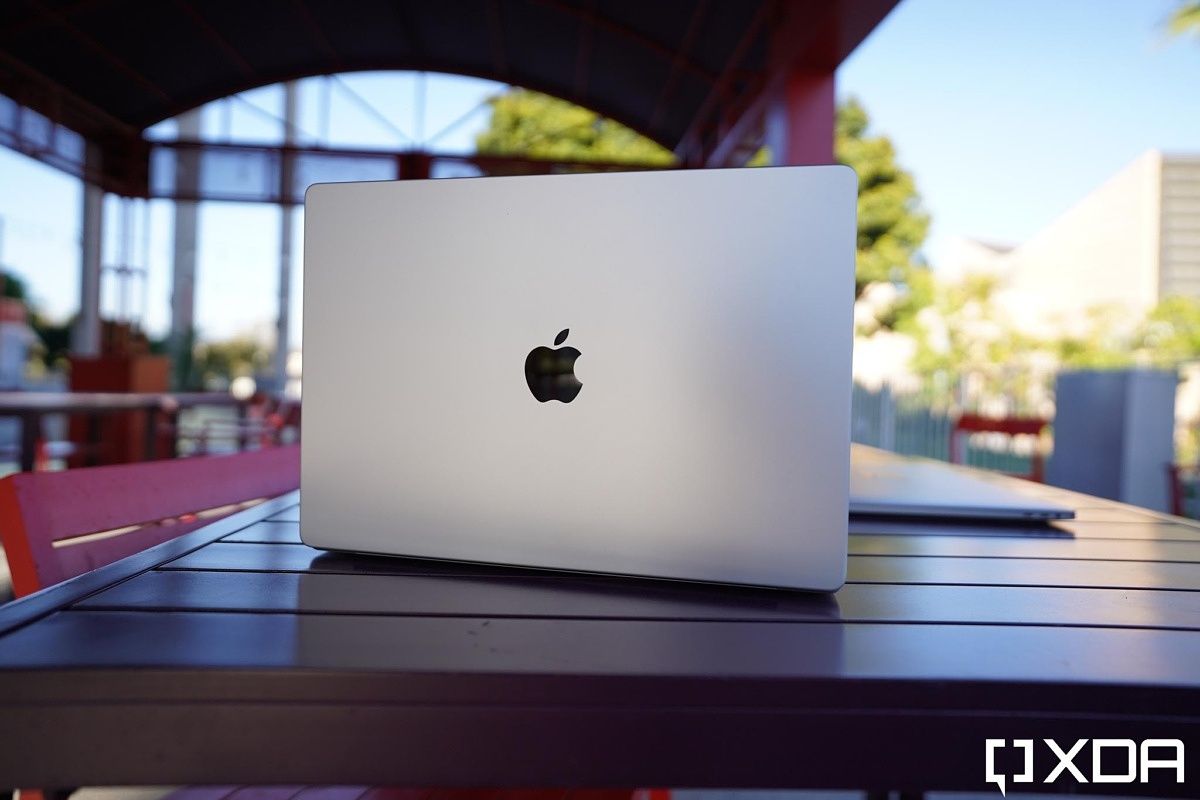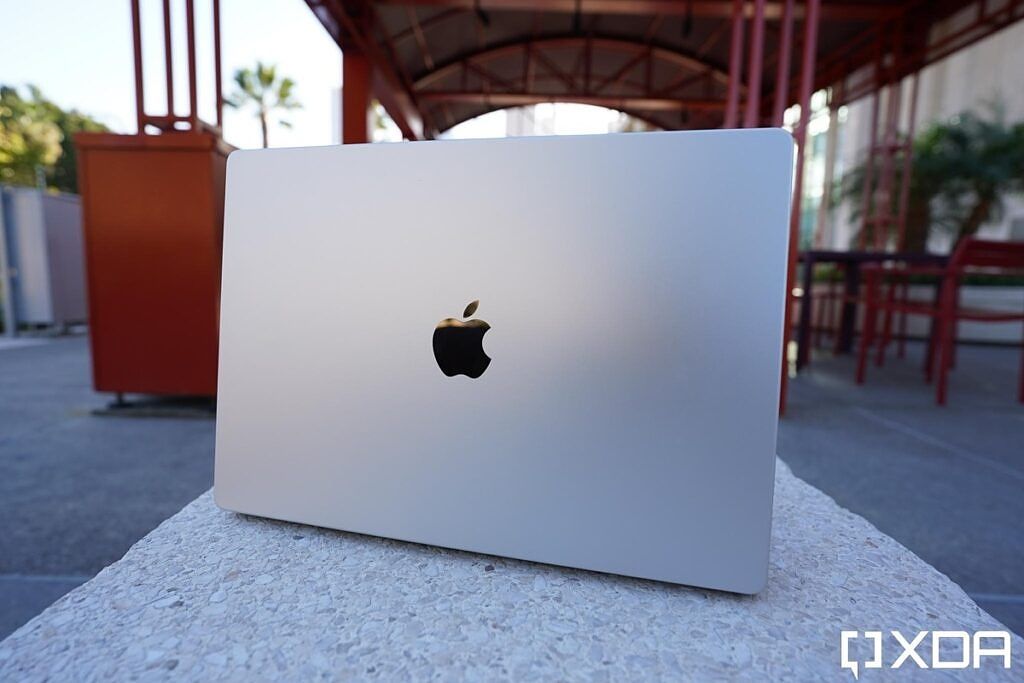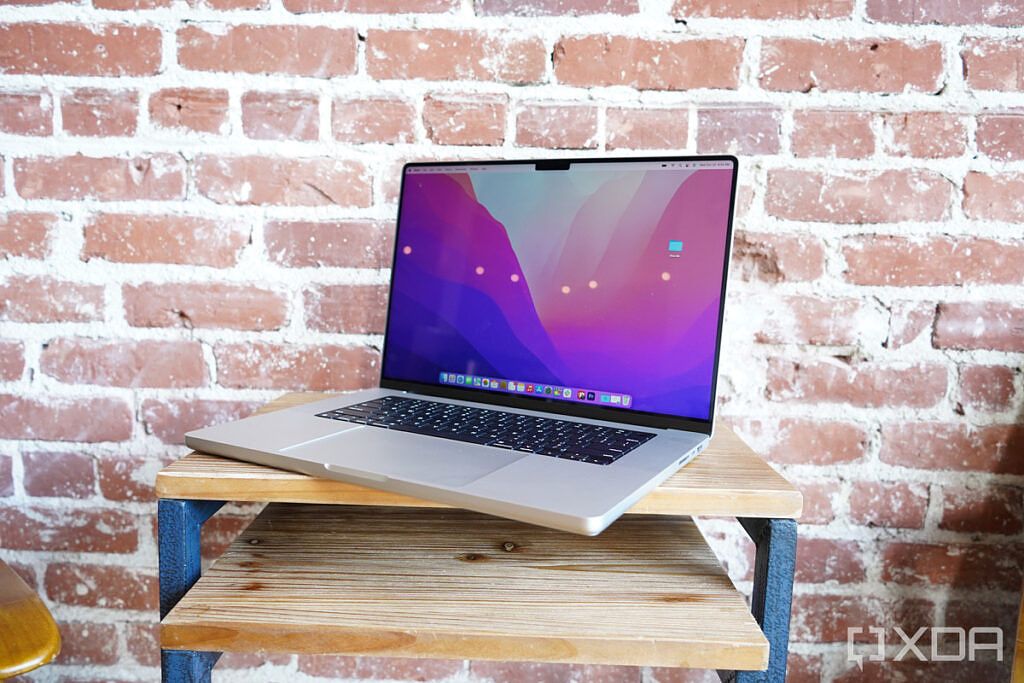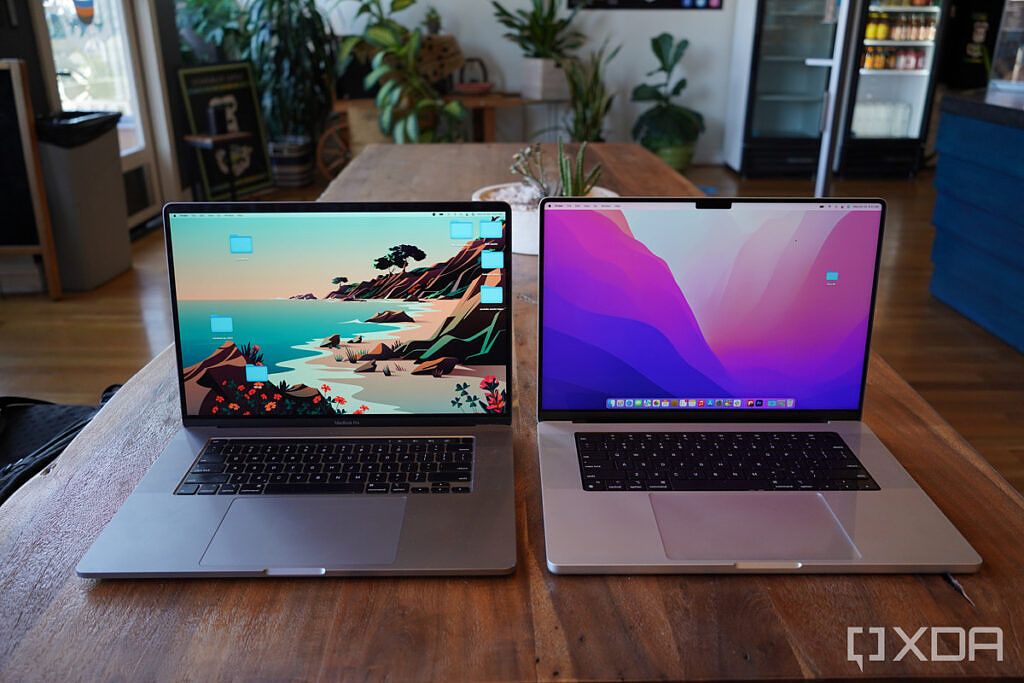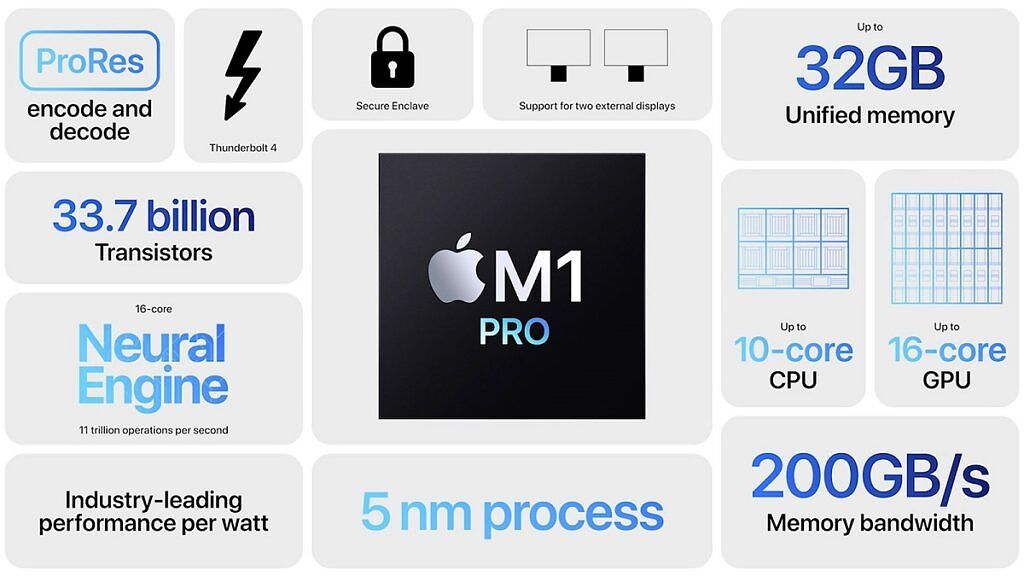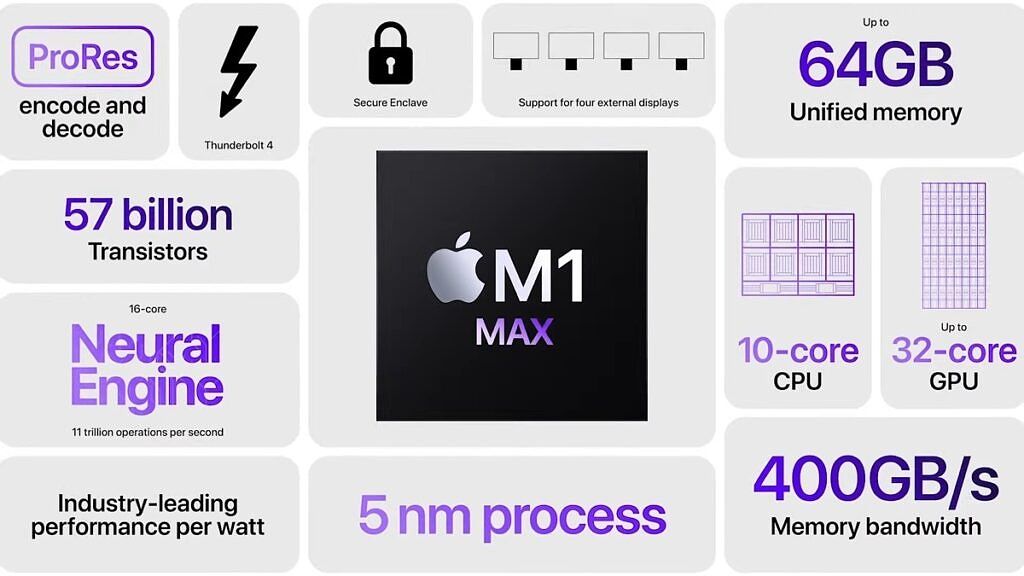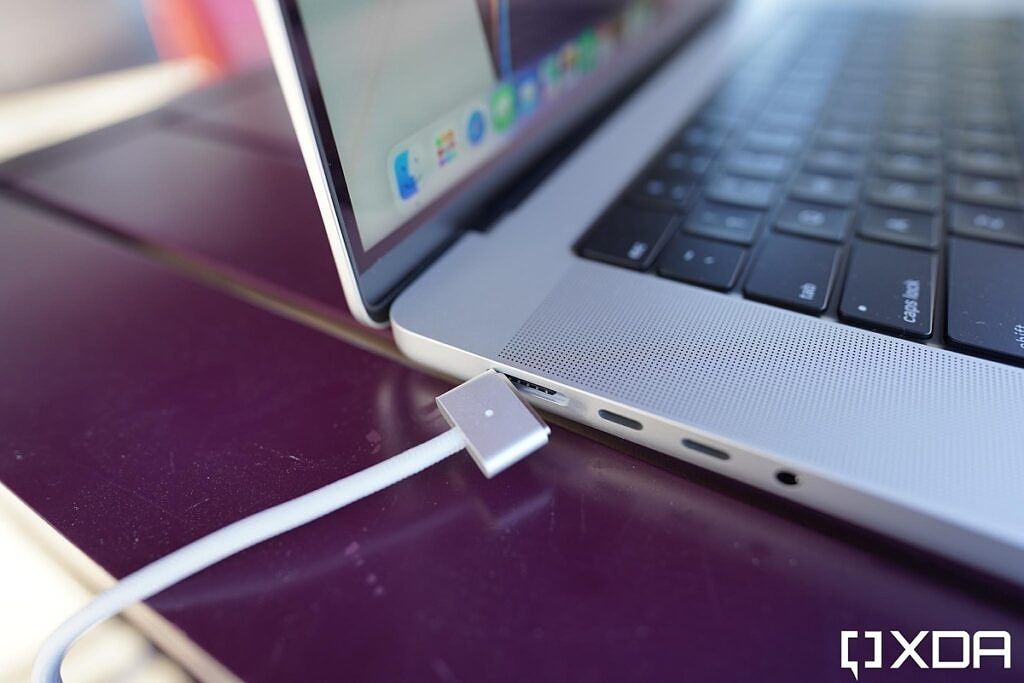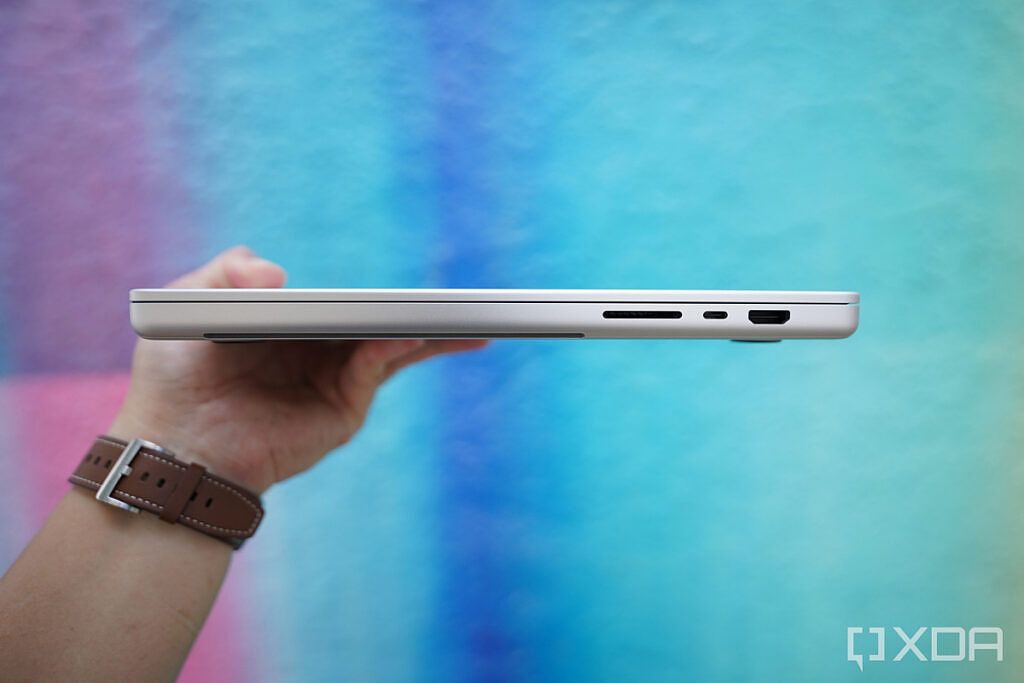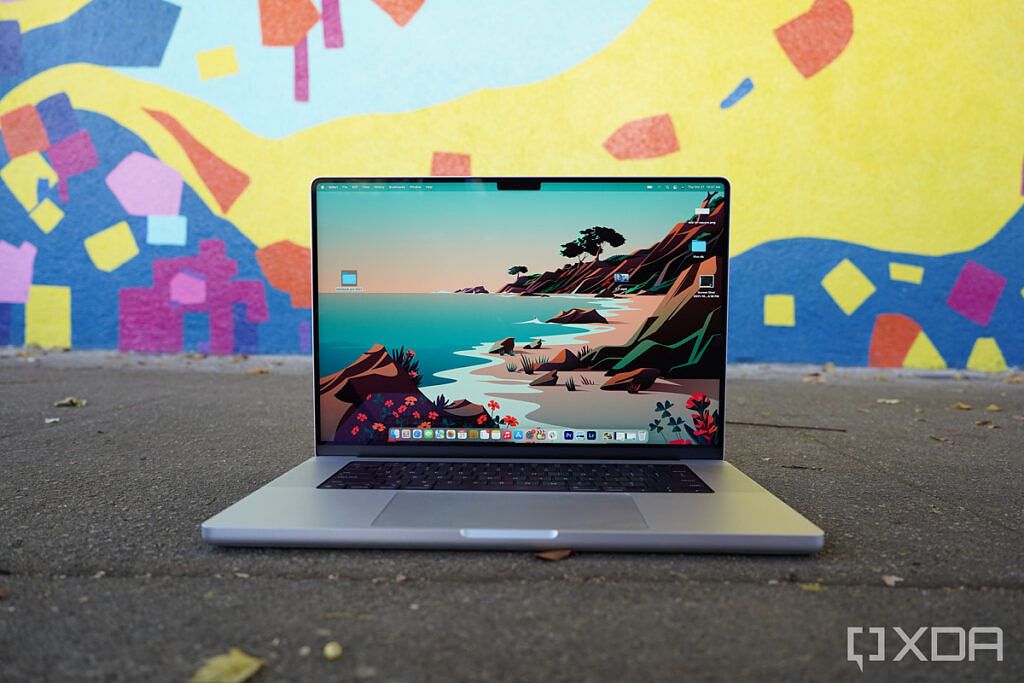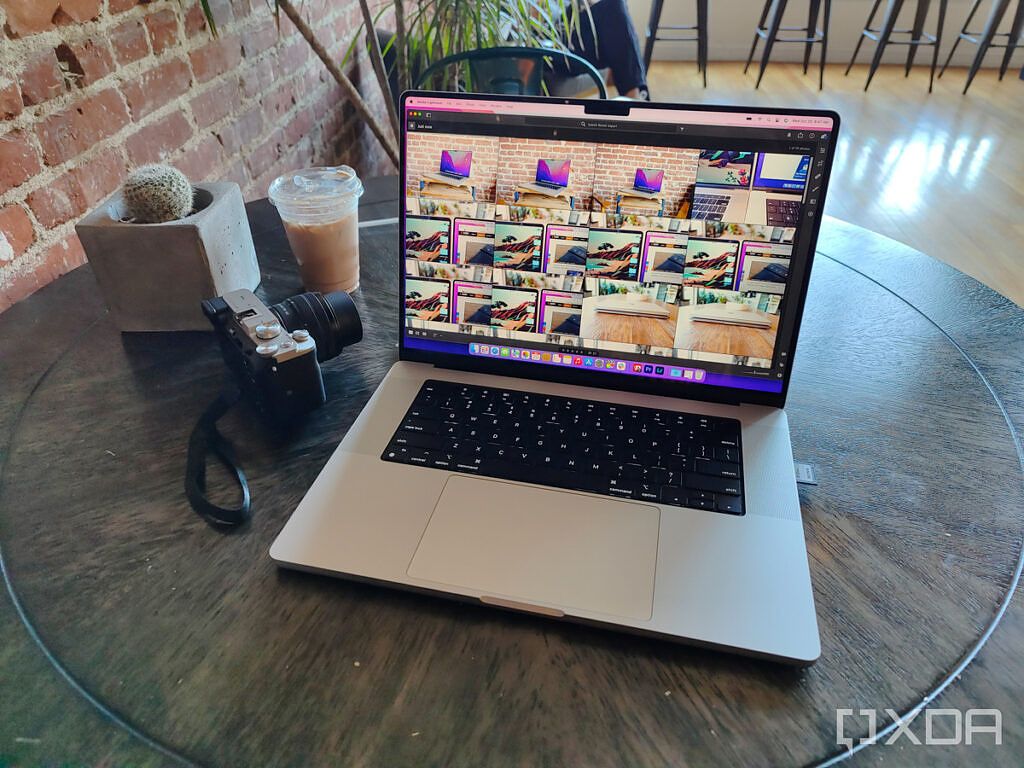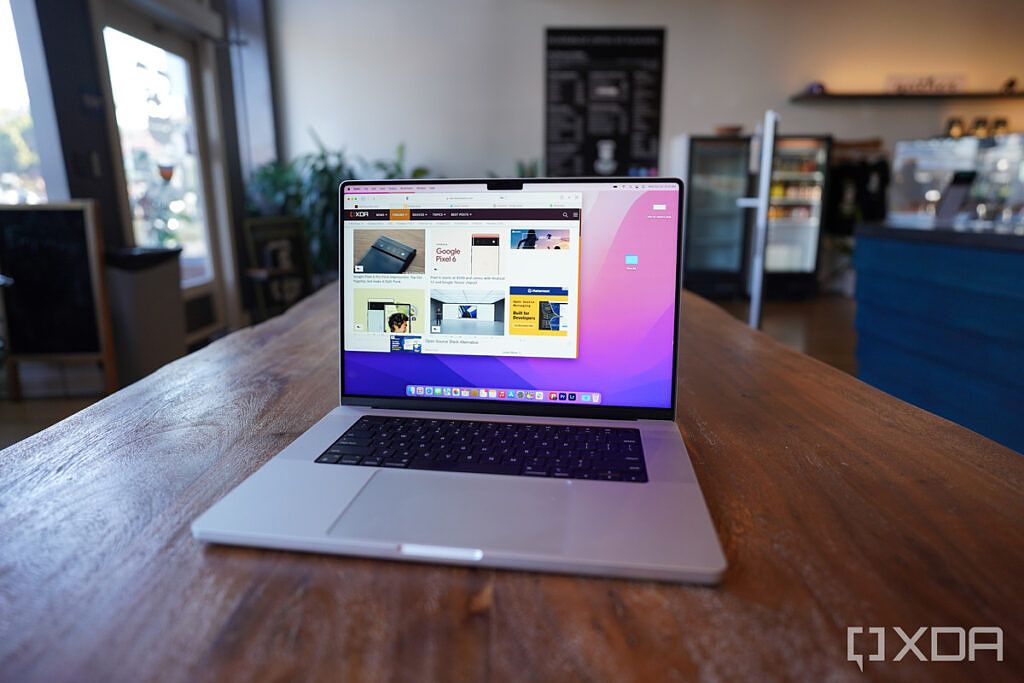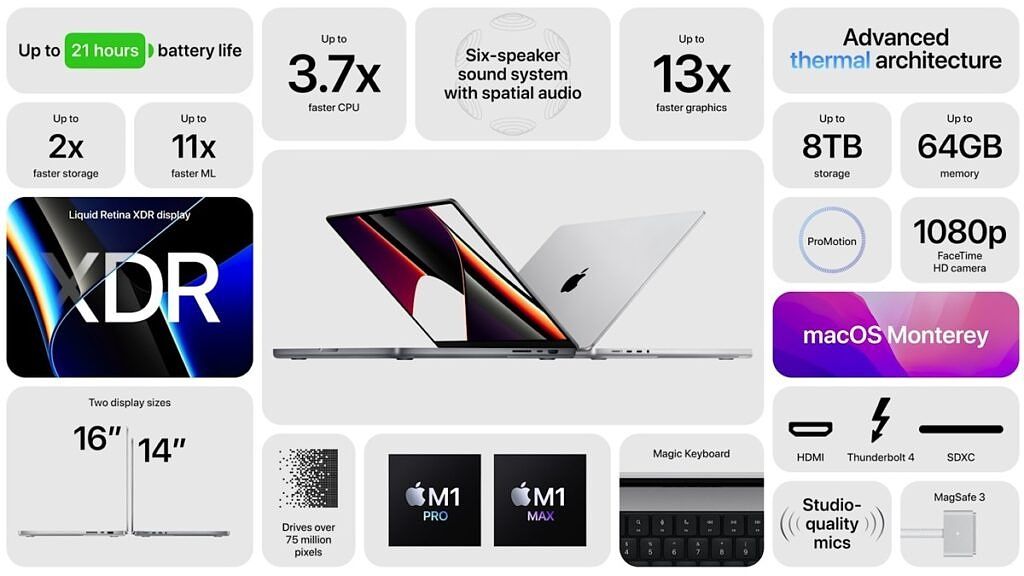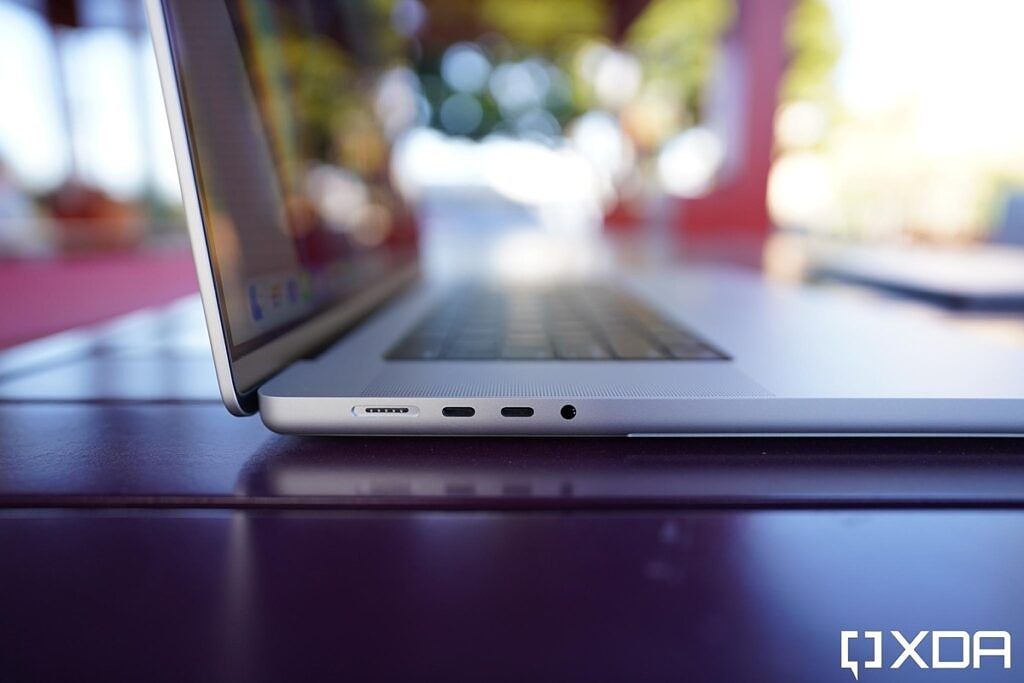Quick Links
After launching the new iPhone 13 series in September, Apple announced the notched MacBook Pro 14 and MacBook Pro 16 alongside the third generation of AirPods. The company refreshed the MacBook Pro 13 and MacBook Air in 2020 with its custom M1 silicon. Then came the time for the elder sibling — the MacBook Pro 16 — to transition from Intel to Apple’s ARM-based chipset. Along with the update to the 16-inch model, Apple also announced a brand new 14-inch MacBook Pro. This move is similar to how the brand replaced the MacBook Pro 15 with a new 16-inch variant a couple of years back. The 2021 MacBook Pro 14 comes with Apple’s M1 Pro or M1 Max chips and brings back some legacy ports from the 2015 MacBook Pro models. Those who prefer the classic MacBook Pro design could still buy the 13-inch MacBook Pro M2 (2022) -- which the company revealed during WWDC22.
Apart from the upgrade in terms of performance, the two MacBook Pro models also get newer screens, an updated keyboard, and faster charging. Is this finally the portable powerhouse for pro users? Here's everything you need to know about the MacBook Pro 14 and MacBook Pro 16 right from the specifications and pricing for all variants to which one is best suited for your needs. We've also included an FAQ section at the bottom to answer some common questions about the two new laptops.
Which MacBook Pro (2021) should you buy?
Both the MacBook Pro 14 and the MacBook Pro 16 have a lot in common with the primary difference being their physical size. As the names would suggest, the MacBook Pro 14 has a 14.2-inch display while MacBook Pro 16 has a bigger 16.2-inch display. In terms of the internals, here are the specifications of both models to give you a better idea of how they differ.
MacBook Pro 14 and MacBook Pro 16 (2021): Specifications
|
Specification |
MacBook Pro 14 |
MacBook Pro 16 |
|---|---|---|
|
Dimensions & Weight |
|
|
|
Display |
|
|
|
SoC |
|
|
|
RAM & Storage |
|
|
|
Ports |
|
|
|
Battery & Charging |
|
|
|
Connectivity |
|
|
|
Colors |
|
|
|
Price |
Starts at $1,999 |
Starts at $2,499 |
As always, Apple lets you configure the internals of the MacBook Pro. This means that both the MacBook Pro 14 and the MacBook Pro 16 can be specced-up to the same configuration. This wasn't possible earlier with Intel Macs. However, with Apple's custom silicon, you can opt for the M1 Max chip with a 10-Core CPU and a 32-core GPU on either machine.
MacBook Pro 16 (2021) Review: Apple finally does justice to Pros with the M1 Max
While the internals may be the same, we might see a difference in terms of thermal performance between the two laptops since the MacBook Pro 16 will technically have a larger surface area for heat dissipation. Whether there is a considerable difference in performance due to this can only be ascertained once we compare the two machines. Otherwise, it just comes down to personal preference as to whether you want a more portable laptop or a bigger display and better battery life.
If your workflow doesn't demand the sort of performance that M1 Max or the M1 Pro with all CPU and GPU cores unlocked offer, you can opt for the baseline MacBook Pro 14 which has the M1 Pro with an 8-core CPU and a 14-core GPU. This should be the variant most general users should opt for since it can handle most tasks with ease. Even for intensive tasks like video editing or compiling large programs, the base model MacBook Pro 14 should suffice. If your work involves a lot of graphics processing, like animations, multiple streams of video editing, or if you want to output your display to more than two monitors, you can opt for the M1 Max.
MacBook Pro 14 and 16: Release Date and Pricing
The MacBook Pro 14 and MacBook Pro 16 models were announced on 18 October 2021 and were available to purchase from 26 October. Depending on what variant or custom configuration you choose, the delivery date may be pushed back further. As for how much the new MacBook Pro 14 and 16 will cost you, here's the pricing information for all the variants -
MacBook Pro 14: Price
|
Sl. No. |
MacBook Pro 14 Variant |
Price |
|---|---|---|
|
1 |
MacBook Pro 14 with Apple M1 Pro (8-Core CPU, 14-Core GPU) |
|
|
2 |
MacBook Pro 14 with Apple M1 Pro (10-Core CPU, 14-Core GPU) |
|
|
3 |
MacBook Pro 14 with Apple M1 Pro (10-Core CPU, 16-Core GPU) |
|
|
4 |
MacBook Pro 14 with Apple M1 Max (10-Core CPU, 24-Core GPU) |
|
|
5 |
MacBook Pro 14 with Apple M1 Max (10-Core CPU, 32-Core GPU) |
MacBook Pro 16: Price
|
Sl. No. |
MacBook Pro 16 Variant |
Price |
|---|---|---|
|
1 |
MacBook Pro 16 with Apple M1 Pro (10-Core CPU, 16-Core GPU) |
|
|
2 |
MacBook Pro 16 with Apple M1 Max (10-Core CPU, 24-Core GPU) |
|
|
3 |
MacBook Pro 16 with Apple M1 Max (10-Core CPU, 32-Core GPU) |
Note that the prices mentioned are for the base RAM and storage configurations of all the models. All the variants have 512GB as the standard base storage. The models with the M1 Pro SoC have 16GB RAM on the base variants upgradeable to 32GB while the models with the M1 Max have 32GB RAM on the base variants upgradeable to 64GB.
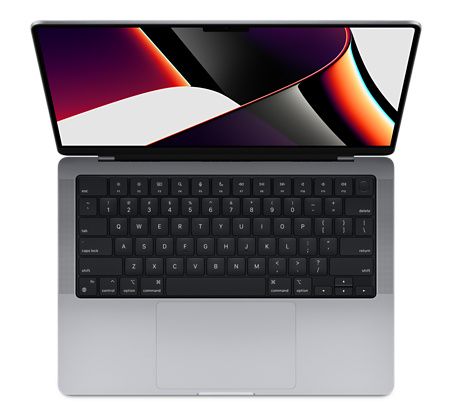
Apple MacBook Pro 14 (2021)
The MacBook Pro 14 comes with an M1 Pro or an M1 Max chip, MagSafe, and a 120Hz Mini-LED display
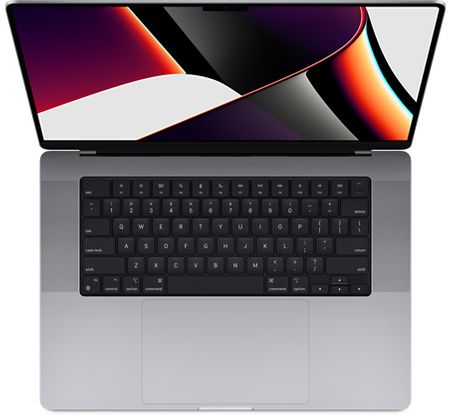
Apple MacBook Pro 16-inch (2021)
The MacBook Pro 16 comes with an M1 Pro or an M1 Max chip, MagSafe, and a larger 120Hz Mini-LED display
What's New in the MacBook Pro (2021)?
The MacBook Pro 14 and MacBook Pro 16 have substantial changes from previous generation MacBooks. They have Apple's custom silicon, a new display, a wide selection of ports, and improved features across the board. Here are all the major changes and improvements on the new MacBook Pro computers announced by Apple. These are all the new features and changes that separate the MacBook Pro 14 and 16 from the older MacBook Pros we've seen up until now.
Apple M1 Pro and M1 Max Silicon
The M1 chip on the MacBook Air and MacBook Pro in 2020 was revolutionary in more than one way. The ARM-based custom silicon made by Apple took the performance of the MacBook Pro 13 to a whole new level while also giving the battery life a huge boost. It was one of the most powerful laptop SoCs at that time which meant that the future iterations of the M1 would only get better. With the MacBook Pro 14 and 16, that's exactly what's happened.
Apple announced the M1 Pro and M1 Max silicon with substantial improvements and new features. These two SoCs can be found on the new MacBook Pro 14 and MacBook Pro 16 computers. The M1 Pro has 10 CPU cores and is based on the 5nm manufacturing node. The 10 CPU cores are split into two clusters -- 8 high-performance cores accompanied by 2 power-efficient cores. The CPU is matched with up to a 16-Core GPU. This is double the number of GPU cores on the M1. Apple claims that the M1 Pro provides up to 70% better CPU performance and 2X better GPU performance compared to the M1.
Some other improvements that the M1 Pro brings are support for up to 32GB RAM versus 16GB on the M1, a higher 200GB/s bandwidth, and 33.7 billion transistors which is more than twice that of the M1. Another big improvement that comes with the M1 Pro is the support for two external displays compared to just one on the M1 from 2020. The chip has dedicated acceleration for the ProRes codec.
If you think the M1 Pro is a performance beast, the M1 Max takes it up a notch by taking the core count on the GPU up to 32. Yes, the M1 Max can be configured to have 32 GPU Cores along with the same 10-Core CPU. It's physically larger than the M1 Pro and houses 57 billion transistors. That's 70% more than the M1 Pro and 3.5x more than last year's M1. Apple claims that the GPU on the M1 Max can match the performance of high-end discrete GPUs while consuming almost 100W of lesser power. Whether these claims are true or not, we'll only know once we get our hands on a MacBook Pro running on the M1 Max.
The M1 Max can be paired with even more RAM than the M1 Pro. It tops out at 64GB instead of 32GB on the M1 Pro. Instead of two external displays, you will be able to connect up to four displays with a MacBook Pro running on the M1 Max. That includes three Pro Display XDRs which have a 6K resolution and a 4K TV. According to Apple, the M1 Max is the most powerful chip that's ever been inside a MacBook. Apart from being powerful, the M1 Pro and M1 Max are also very power efficient. Apple claims up to 21 hours of battery life on the MacBook Pro 16 which is one of the best so far on any laptop.
MagSafe and Ports
If you've used a MacBook from before 2016, Apple used a proprietary charging port on their laptops call MagSafe. This is different from the MagSafe introduced on the iPhone with the iPhone 12, but the idea is similar. The MagSafe port resided along with other ports on the side of older MacBooks and was magnetic in nature. The charger also had a MagSafe end that would snap onto the connector via magnets if you brought it close enough.
Apple got rid of MagSafe from the MacBook lineup back in 2016 when it introduced USB-C ports on all MacBooks. Along with other conventional ports like USB-A, HDMI, and the SD Card reader, Apple also removed the proprietary MagSafe charging port in favor of charging via the USB-C port. USB-C is more universal and with most modern-day phones (except Apple's) having USB-C ports, the switch made sense. However, older MacBook users seemed to miss MagSafe a lot due to two main reasons -- one, it was convenient since you only had to bring the charger close to the port and it would snap on. And two, it would prevent the charger from tugging the MacBook along with it in case someone tripped on the wire.
Apple seems to have heard those users and brought back MagSafe 3 with the new MacBook Pro 14 and MacBook Pro 16. MagSafe 3 improves the charging speed from the older MagSafe as well as the USB-C charging solution Apple employed on previous MacBook models. There's now support for up to 140W fast-charging on the MacBook Pro 16 while the MacBook Pro 14 supports up to 96W. Apple claims that with these new MagSafe 3 chargers, you can top-up the battery to 50% in just 30 minutes.
Along with MagSafe, Apple has also brought back other legacy ports that were removed from the MacBook Pro in 2016. The HDMI port and SD Card reader also make their way back to the MacBook Pro. The headphone jack can now drive high-impedance headphones. Apart from this, there are three Thunderbolt 4 ports on the MacBook Pro 14 and 16. The inclusion of these ports is what makes the new MacBooks truly "Pro". Apple has also improved the mics and speakers on the 14- and 16-inch MacBook Pros. The Touch Bar which was introduced with the 2016 MacBook Pro models has also been retired by Apple. It makes way for the conventional function keys to come back accompanied by Touch ID.
Display
The display is another area where the MacBook Pro has received a substantial upgrade. Both the MacBook Pro 14 and MacBook Pro 16 now have Mini-LED displays. The Mini-LED tech offers better contrast and can now reach a sustained brightness of 1000 nits along with a peak brightness of 1600 nits. These are excellent levels of brightness for a laptop. The new display panels also have support for ProMotion which means they can refresh at up to 120Hz. We first saw ProMotion on the iPad Pro followed by the iPhone 13 Pro series last month. Now, it's made its way to the MacBook Pro.
Apple has also trimmed down the bezels around the Liquid Retina XDR display. As a result, the MacBook Pro 16 now has a 16.2-inch display in a similar form factor as the older MacBook Pro 16. The MacBook Pro 14 is being introduced for the first time and has a 14.2-inch display in a form factor that's just slightly larger than the MacBook Pro 13. With the smaller bezels, however, Apple could not fit the webcam into its traditional position which means there's now a notch on the MacBook. Yes, a wide notch just to house the webcam and nothing else.
This is a slightly controversial decision and has started a debate whether the notch was really necessary or not. Another fair argument is that if the notch had to be there, Apple could have managed to provide Face ID on the new MacBooks to make authentication easier. That's not the case though as Touch ID remains to be the only biometric authentication on board. The notch doesn't take up too much screen real estate though as it occupies only a small portion of the menu bar thanks to the slightly taller 16:10 aspect ratio.
MacBook Pro 14 and 16: Color Options
Apple is selling the MacBook Pro 14 and MacBook Pro 16 in two color options -- Space Gray and Silver. You can pick the one that looks the best to you since looks are always subjective!

Apple MacBook Pro 16-inch (2021)
Space Gray is the classic Apple color that we've been seeing for years now. It's a slightly dark shade of metallic gray and looks elegant.
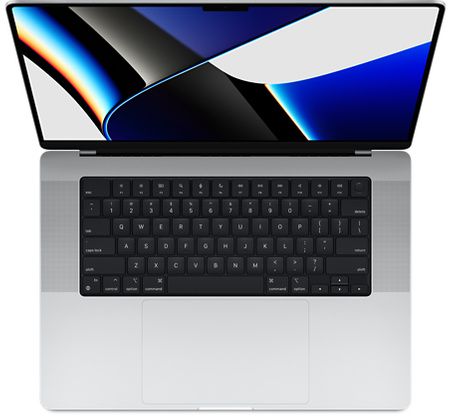
Apple MacBook Pro 16-inch (2021)
Silver is another color we've been seeing on MacBooks for a long time now. It's a slightly lighter shade than Space Gray.
Where to buy the 2021 MacBook Pro?
If you're planning to buy the MacBook Pro 14 or the MacBook Pro 16, we've curated the best deals and offers to help you find the best store and save a few bucks if possible.

Apple MacBook Pro 14 (2021)
The MacBook Pro 14 comes with an M1 Pro or an M1 Max chip, MagSafe, and a 120Hz Mini-LED display

Apple MacBook Pro 16-inch (2021)
The MacBook Pro 16 comes with an M1 Pro or an M1 Max chip, MagSafe, and a larger 120Hz Mini-LED display

Apple MacBook Pro 14 (2021)
The MacBook Pro 14 comes with an M1 Pro or an M1 Max chip, MagSafe, and a 120Hz Mini-LED display

Apple MacBook Pro 16-inch (2021)
The MacBook Pro 16 comes with an M1 Pro or an M1 Max chip, MagSafe, and a larger 120Hz Mini-LED display
Frequently Asked Questions (FAQ) on the MacBook Pro (2021)
While we hope to have covered every detail about the MacBook Pro 14 and 16, there would be some common questions that consumers would have regarding various aspects of the new MacBooks. We'll try to answer them for you in this section. If you don't find the question you're looking for in this list, feel free to leave it in the comments down below and we will add it to this section.
Can I use Bootcamp on the MacBook Pro 14 and MacBook Pro 16?
No, you cannot use Bootcamp on the MacBook Pro 14 and MacBook Pro 16 since they run on Apple's ARM-based silicon. Bootcamp is supported only on Intel-based Macs. You can, however, expect to run Windows on the these MacBooks via other third-party apps like Parallels Desktop.
Can I upgrade the RAM or storage on the MacBook Pro?
You can configure the RAM and storage as per your requirement while ordering the MacBook Pro from Apple. However, you cannot make any changes or upgrades to the RAM or storage of the MacBooks once you have a particular variant. Both the RAM and storage are soldered directly onto the motherboard and cannot be replaced.
What countries is the MacBook Pro available in?
Both size variants of the MacBook Pro have been launched throughout the world, which means you will be able to buy them in any region where Apple sells its products. This includes the US, the UK, EU, India, UAE, etc.
How much RAM and storage do I need in the MacBook Pro?
If you opt for the base variant of the MacBook Pro 14 or 16 running on the M1 Pro chip, you will get 16GB of RAM that can be upgraded to 32GB. For most users, 16GB of RAM should be sufficient. If you're going to be running a lot of apps at once and are going to edit multiple streams of video while having tons of browser tabs open in the background, we suggest going for the 32GB RAM option.
The M1 Max variants of both laptops start at 32GB RAM and can be upgraded to 64GB. 64GB seems like overkill on a laptop so unless you're absolutely sure you need that extra headroom, 32GB should be more than sufficient.
As for storage, it completely depends on your usage. If you're going to edit a lot of 4K or 8K videos off the internal storage, you might want to get a higher storage variant. However, Apple's storage upgrade costs a lot of money so you can instead opt for a lower storage variant and get an external SSD for a much cheaper price.
Can I use an external GPU with the MacBook Pro?
No, you cannot use an eGPU with the MacBook Pro 14 or MacBook Pro 16 since the M1 Pro and M1 Max platforms don't support it.
Does the MacBook Pro have Thunderbolt?
Yes, the MacBook Pro comes with three Thunderbolt 4 ports.
Can I connect external monitors to the MacBook Pro?
If you've chosen a MacBook Pro with the M1 Pro chip, you can connect up to two external monitors. With an upgrade to the M1 Max, you will be able to connect up to four external monitors.
Does the MacBook Pro have a good webcam?
Apple finally managed to put a 1080p webcam on the MacBook Pro 14 and MacBook Pro 16. They've also paired it with a better lens that has an f/2.0 aperture which should ideally result in better performance especially in low-light and indoor lighting scenarios.
Does the MacBook Pro have 5G?
No, there's no cellular variant of the MacBook Pro so there's no way you can use 5G networks on it. You can access the internet on the MacBook Pro via Wi-Fi or via an ethernet dongle.
Does the MacBook Pro come with a charger?
Thankfully, yes! Apple hasn't removed the charger from the MacBook box yet. The MacBook Pros come with support for MagSafe 3 and you get the USB-C to MagSafe cable as well as a USB-C adaptor right inside the box itself.
With the base model MacBook Pro 14, you get a 67W adaptor in the box that can be upgraded to a 96W adaptor for $20. With all other variants of the 14-inch MacBook Pro, you get a 96W charger in the box.
The MacBook Pro 16 comes with a 140W power adaptor across all variants. You can also use third-party charging bricks or your existing ones to charge the MacBook Pro via the USB-C ports.
Does the MacBook Pro have Touch ID?
Yes, the MacBook Pro has Touch ID built into the keyboard. It can be used to unlock the MacBook and authorize transactions.
Does the MacBook Pro have Face ID?
Despite having a large notch on the display, Apple hasn't implemented Face ID on the MacBook Pro 14 and 16.
That's pretty much everything you need to know about the 2021 MacBook Pro 14 and MacBook Pro 16. They come with a redesigned chassis, powerful internals, a new display, and a useful array of ports. Apple's M1 Pro and M1 Max silicon seem promising and are proving to be a threat for established names in the industry like Intel and AMD. Apple is even taking on discrete GPUs from brands like Nvidia with the 32-core GPU on the M1 Max. If you were waiting for a Pro machine in its true sense from Apple, looks like it's finally time to splurge!

